Review for Hero-U: Rogue to Redemption
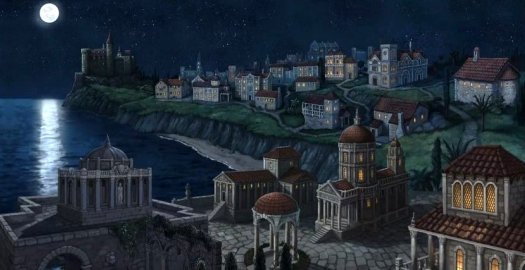
During the golden age of adventure gaming, designers Lori and Corey Cole made a name for themselves at Sierra with the Quest for Glory series of hybrid adventure-RPGs, still fondly remembered by many to this day. Now, twenty years since the last installment in that venerable franchise and two successful Kickstarter campaigns later, the Coles have returned to the saddle with Hero-U: Rogue to Redemption, a spiritual sequel to Quest for Glory that, by and large, proves they haven’t missed a step in all this time. The game does show a few noticeable chinks in its armor from time to time, but many of these are carried over from their earlier series, so veterans will likely be expecting them.
A minor deviation from QfG is evident as soon as the game opens, in the reveal of the playable character. Traditionally, the older games centered around a hero created and customized by the player for visiting far-away lands, experiencing adventure and besting evil. Hero-U instead shifts focus to an original protagonist; here players take on the role of Shawn O’Conner, a young man who is caught by a mysterious stranger while attempting to steal an artifact in order to be accepted into his local Thieves Guild. Confronted by the stranger, Shawn is given the choice of being handed to the city guards to rot away in prison or getting a second chance by enrolling at Hero University, an academy developing latent heroic talents of youths eager to leave their mark on the world. Obviously, Shawn chooses the latter option.
Evoking a more-than-passing resemblance to something from the Harry Potter universe, Hero-U takes place in and around the eponymous academy, an ancient castle overlooking the town of Caligari, on the island of Sardonia. The unfamiliar setting is not surprising; each successive entry in the Coles’ previous series always presented a new backdrop for its narrative, though copious references to locations and creatures from throughout the Quest for Glory franchise place Sardonia within the same world as the others, while still working perfectly fine as a standalone story.
Upon reaching the school in the dead of night, Shawn is enrolled in the course for Rogues – or “Disbarred Bards” as the game prefers to call them. This time around, players have no choice in the matter of what class to play; as the irritable school caretaker Mortimer Terk points out, Shawn is too unskilled to be a Warrior, not smart or magical enough to be a Wizard, not good enough to be a Paladin, and lacking the musical or acting talent to become a Bard.
While this seems like it might be more restrictive, Hero-U still keeps the same element of gameplay flexibility that its predecessors were so well known for. Shawn is immediately given a multiple-choice aptitude test, with your responses translating into stat points assigned to a list of skills and abilities he can increase over the course of the game. This mechanic, which goes a long way toward pushing Hero-U into RPG territory, means that almost everything you do throughout the game, including simply traveling up and down stairs or sneaking quietly through the school halls, gradually furthers Shawn’s development. The daily classes Shawn attends also frequently focus on teaching and furthering his talents in a specific Rogue-ish skill, like lockpicking and disarming traps.
The title Hero-U doesn’t just describe its setting; much of the actual flow of the gameplay revolves around Shawn’s daily school life. First thing out of bed every morning, Shawn must attend Rogue class, which requires actually paying attention to a short lecture each session, with the occasional multiple-choice exam testing the content covered during lessons. As the semester progresses, Shawn is also given the chance to take an elective course – this is where players can augment their Rogue skills with those of other character classes, receiving training in magic use, brewing of potions, or construction of gadgets, just to name a few. Of course, you can simply opt out of the electives altogether, and showing up on time each day is your responsibility (an on-screen clock helps keep track of your daily duties as a student).
Though attending class sounds tedious, it represents only a brief segment of each day, and really helps deepen the game’s role-playing element without being overbearing. Still, there’s an unavoidable “daily grind” element – wake up, go to class, practice, have dinner, go to sleep. This works in favor of immersion the majority of the time, but does get slightly cumbersome considering the semester lasts for fifty days (taking roughly 30-plus hours to reach the credits). At least Shawn doesn’t have to go it alone, as a big part of being a Rogue is the relationships one forms with peers. Hero-U features a reputation system to keep track of Shawn’s social standing with classmates and school personnel, whether you want to become the teacher’s pet, romance a fellow student, or antagonize the class bully.
Apart from Shawn and the university staff, his six classmates in the Rogues course make up the entire visible school population. There are supposedly other students in other courses, but we never see them (the game cleverly explaining this by noting that Rogues prefer to keep hours disagreeable to other character classes). This concentraton on a small set of characters really fleshes them out in a more interesting way. It’s nice that they are more than simply window-dressing: they participate in class lectures, have personalities and opinions, and many of them may be hiding a secret or two that could get unraveled as the game progresses, depending on your choices of dialog and actions.
As days pass and Shawn makes discoveries around the campus, certain quests and tasks become available. Most of your classmates have a particular quest that they will play a big part in, if you choose to undertake it (or simply stumble upon it through sheer luck). Shawn himself has a vested interest in uncovering the truth about his father’s mysterious death many years ago, as well as the identity of the unknown stranger who sent him to Hero-U in the first place. Dialog (even when it’s cheekily overheard through a closed door) offers some guidance as to what plotlines are in progress, and the looming threat of the game clock certainly gives the game a greater sense of urgency. The students’ stories are only available for limited windows of time, however, and will progress with or without you taking an active role in them. Ultimately, it’s up to you to search for and follow up on clues or to let these quests pass you by. It’s Shawn’s storyline that will see the game to its conclusion; others are optional.
In my experience, a typical play session with Hero-U started with a loose end or two carried over from last time, like finding a way into a locked dungeon room or needing to earn a few lyra to buy a magical weapon from the school store. But before long, events had a way of linking from one to the next, and before I knew it a whole week of in-game time had flown by. This is due to some very smart writing. After an early-game bump where you are more or less thrown into the open-ended world without much guidance on how to proceed, the game does a great job of coaxing you into the right direction with carefully placed lines of dialog. Being observant and using common sense will usually keep at least one obvious way forward available to you at all times. In one particularly memorable moment of intuitive writing near the end, I was asked to choose who would be the best choice for Rogue of the Year. After careful consideration, I made my choice; Shawn then explained my decision in his own words, echoing each point of my thought process perfectly.
Veteran QfG fans will already know to expect this, but Hero-U is absolutely stuffed with puns. Many, many items in the environment can be examined and interacted with, often to no result other than unique flavor peppered with wordplay. On one hand, the amount of unique text responses – there’s no voice acting at all in the game – are a testament to how much effort the writers took to make examining everything worth your while. On the other hand, many players will likely get their fill of the constant barrage of puns and simply stop clicking on every single crate, barrel, pile of debris, and wall sconce.
As cleverly written as the script can be, the narrative does occasionally suffer from some pacing letdowns. The aforementioned early moments may turn some players off, as it does take some time to get one’s bearings in becoming familiarized with the setting and its cast of characters. I also found a second lull occurring near the game’s end, when it seemed for a while that there were few crucial things for me to do with my days until the game clock caused the endgame to commence. Perhaps there was a side quest that was going on parallel to me that I simply missed some prerequisite steps for, but either way I ended up playing through a suspiciously humdrum couple of days just when the momentum should have really been building.
Fortunately, for the most part being a student at Hero-U makes for an interesting gameplay experience. Completing assigned homework, reading books to piece together a bit of the game’s lore, stumbling upon haunted objects and secret passages, even researching and writing a term paper are surprisingly engaging – part of what pulls you along, wanting to do “just one more” thing. But while these school-life segments have a charm all their own, dungeon crawling turns out to be an often gripping and thrilling experience as well. Part of the credit here can easily be attributed to the dungeon designs, constructed with a sense of purpose, to push along an optional narrative branch or provide a compelling sense of discovery. There are very few times that heading into a dungeon feels like a haphazard experience or ends up as anything less than worthwhile.
Navigating and surviving the cellars, caves, and catacombs relies more on properly-leveled skills than wits. Being able to unlock the way forward or grapple across a chasm is a matter of having raised the associated stat to a certain threshold. Roadblocks that depend more on player ingenuity do exist as well, typically woven into the normal flow of the game rather than interrupting it. For example, there is a treasure map that tells of hidden riches in the sprawling sea caves, but following the map and navigating the labyrinthine maze of caverns becomes another puzzle in and of itself. With a bit of outside-the-box thinking, even boss fights can be creatively circumvented and won without resorting to violence. A few traditional puzzles also make an appearance, but these truly are in the minority and are actually one of the weaker aspects of the game (of the two that come to mind, I was able to brute force one that I missed the in-game clues for, and the other solved itself – probably an unfixed bug).
Not all fighting can easily be avoided, as delving into the dungeons and catacombs surrounding the university comes with some basic hack-and-slash combat. The battle system in QfG was never something to write home about, and sadly that hasn’t changed much here, though it is perhaps a bit more deliberate than in some previous entries. The entire game is presented from a classic isometric RPG perspective, so when an enemy approaches Shawn (or he gets the drop on it by sneaking), a few combat buttons simply pop up on the screen. Battles are turn-based, meaning each combatant can move and perform an action once per turn. However, this often just means hitting the attack button, as Shawn’s movement is pretty limited and staying out of range isn’t an option unless an item is used to hold enemies in place. It’s possible to escape battle altogether, though this drains most of Shawn’s health and advances the game clock even as it returns him to the dungeon’s entrance, effectively ending your adventuring for the day.
Taking elective courses can give Shawn some much-needed additional options during combat, such as magic spells, giving him at least some edge over his foes. But when the chips are down, a battle may just devolve into back-and-forth swipes until one side falls. Considering the game’s emphasis that Rogues should avoid danger when possible, it makes sense that fighting even a pair of enemies is risky, and three or more can easily mean a huge drain on resources and health, or simply a quick defeat, forfeiting all items used during combat and kicking you back to the infirmary. For those times when danger is unavoidable, a handy save-anywhere feature helps to minimize the amount of items and progress lost this way.
In terms of graphical presentation, Hero-U forges ahead of its predecessors, at least a bit. It’s by no means an over-the-top visual marvel, but the colorful locations are detailed, feel lived-in, and are lovingly hand-crafted, stuffed full of ornamental wall decorations, furniture, and other points of interest. Each character also gets his or her own close-up portrait to go with any on-screen text. Shawn and a few others have received the full animation treatment, while the majority of the cast simply has static places where they appear at certain points throughout the day. There isn’t much more in terms of animation – no cinematics, for example – but many important moments are celebrated with beautifully drawn still scenes. These, in addition to being able to see a full-screen close-up of every portrait in the castle, add an impressive and often gorgeous touch of class to the visuals.
The lack of voice-over is unfortunate, as the last few games of the Quest for Glory series were fully voiced, although it's unsurprising for an indie developer with a limited budget. However, Hero-U makes up for this in no small part with a very well-composed musical score. There are distinct themes for various sections of the castle and its dungeons, which manage to keep from being overwhelming while still adding important elements of mystery and magical adventure to much of the game.
Hero-U: Rogue to Redemption accomplishes something many revivals of fan favorites struggle to do: it manages to deliver an experience as faithful and reverential to the Coles’ beloved original series as possible, including the characteristic niggles series veterans already know to expect, like an abundance of verbal puns, slow combat, and a bit of an everyday grind. This should win the favor of old-school Quest for Glory fans, yet despite its many nods to the Sierra classics, this game absolutely stands on its own merits, with clever writing that manages to pull players along its somewhat open-ended narrative, possibly even without them realizing it. Those new to the series will find a well-designed and inviting experience here, so if this sounds like your kind of RPG-adventure hybrid, then pack your suitcase and enroll for a semester abroad at Hero-U.
Our Verdict:
The founding family of Quest for Glory has returned with an all-new unofficial entry that proves worthy of its predecessors’ legacy yet still manages to distinguish itself entirely on its own. Existing fans will be thrilled to see all the classic design staples make a return in Hero-U, while newcomers can enjoy a witty, substantial (if somewhat bloated) adventure-RPG experience.






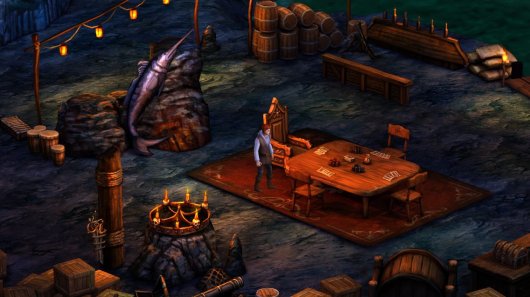


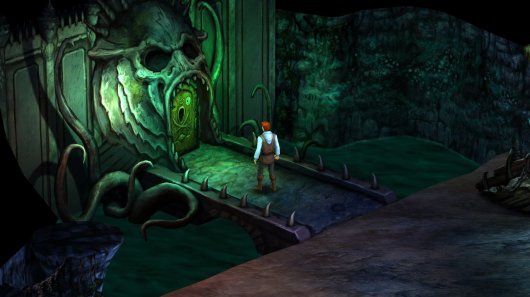





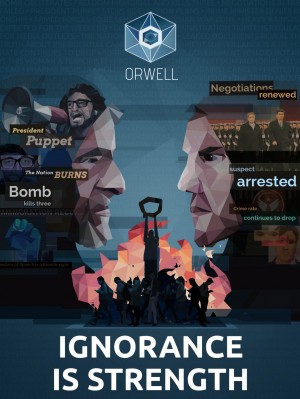
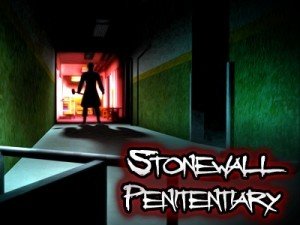

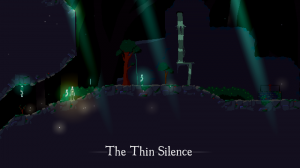


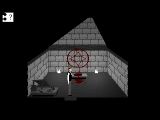


__small.jpg)




